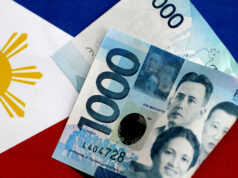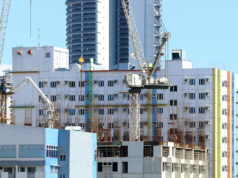PHL economy’s recovery prospects improving
The Philippines’ recovery prospects have improved as of September based on the latest scorecard of Oxford Economics, putting the country at a higher rank among Asia-Pacific economies.
“The updated APAC scorecard continues pointing towards a staggered recovery in the region. But the rankings show some noteworthy shifts compared to the erstwhile Asia scorecard. Northeast Asia no longer distinguishes itself as the H2 recovery leader compared to the rest of the region,” the report published Wednesday read.
The Philippines’ recovery scorecard eased to -0.12 this month from -0.4 in June, which was when the report was launched. Despite the improvement, it still scored negatively in recovery, which was the average of four components: vulnerability, stringency, containment, and policy scores.
Among 14 economies in Asia Pacific, the Philippines’ ranking in terms of recovery prospects is now fifth from the bottom, up by three places from the previous scorecard where it was projected to post the second-slowest recovery after India.
Broken down, the country’s scores for stringency of lockdown and macro policy measures adopted in response to the pandemic improved to positive territory, with the former rising to 0.1 from -0.3 previously and the latter to 0.2 from -0.4.
However, its score stayed in the red for vulnerability (to -0.3 from -0.2, previously) and containment indicators (to -0.5 from -1.2). Vulnerability scores a country’s exposure in terms of health and the economy, while the containment component covers the economy’s progress and speed in controlling the outbreak.
The economies seen posting the slowest recoveries are India, Indonesia and Hong Kong. Meanwhile, New Zealand, Taiwan and Singapore are now leading recovery prospects across Asia Pacific.
Countries across the globe implemented various restrictions to curb the spread of the coronavirus, hurting their economic performance.
The think tank expects the Philippine economy to shrink by 8% this year. The economy plunged into recession in the first half after posting a nine-percent contraction during the period.
The Philippines imposed one of the world’s longest and most stringent lockdowns from mid-March to May, which included barring individuals from leaving their homes and restricting the operations of some sectors of the economy. Restrictions have been eased since then.
“The world is entering a more difficult stage of recovery, with the post-lockdown GDP (gross domestic product) bounce expected to give way to slower growth in coming quarters. At the same time, the COVID-19 (coronavirus disease 2019) situation has broadly deteriorated across APAC economies, following the widespread easing in social distancing measures since mid-Q2,” Oxford Economics said.
It said downside risks to their recovery forecasts include prolonged and recurring waves of the outbreak as this could result in uneven resumption of activity and slower recovery.
Meanwhile, it said the faster-than-expected production of vaccine will be a positive development as this would boost the confidence of consumers and businesses. — BML



